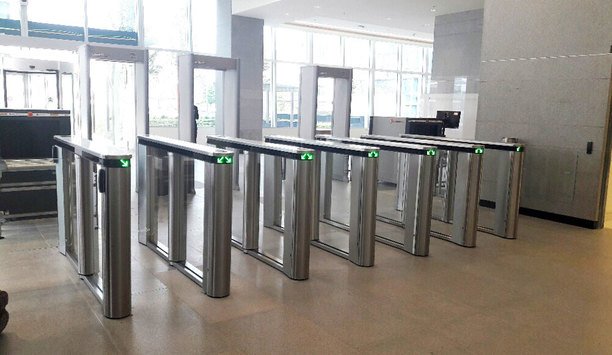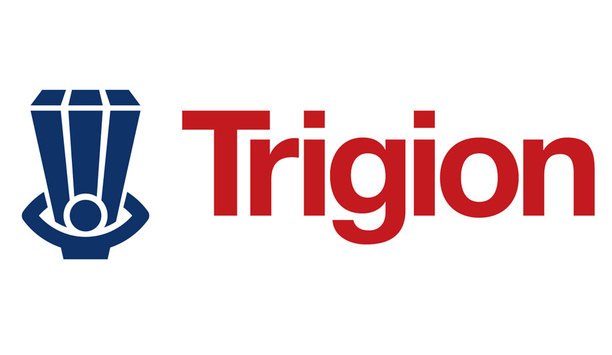As a tourist and commercial gateway to the country, the International Airport of Mexico City (AICM) plays a vital role in the development of Mexico’s economy, ensuring the prosperity and global accessibility of this burgeoning nation.
International and domestic hub
The AICM is Latin America’s busiest airport, and one of the world’s 30 most active airports in terms of passengers, operations and cargo. Located six miles east of Mexico City, the airport is Mexico’s primary international and domestic hub, with direct flights to more than 300 worldwide destinations. The airport boasts an impressive array of modern facilities including restaurants, shops, hotel reservation desks, tourist information, ATMs, banks, foreign exchange, business facilities and a post office.
Further increasing the complexity of the AICM’s operation, the airport is undergoing major construction work, including building new concourses and a new terminal (Terminal 2). Once built, the new facilities are expected to increase airport passenger capacity by nearly 50%. This will enable the airport to handle an additional 16 million passengers per year, up from the current 32 million travellers who pass through.
Layers of security
With all this activity, the issue of access control is a key consideration. With nearly 340,000 flights in a year, and about 20,000 staff on site, the AICM has significant access control requirements. As a regional leader, the AICM turned to HID Global, a manufacturer in the access control industry, to help address its needs.
With nearly 340,000 flights in a year, and about 20,000 staff on site, the AICM has significant access control requirements |
Preventing terrorist attacks and protecting the domestic and global transportation network, transportation security is a critical mission for any airport. One way in which airports have effectively provided traveller security is by setting up security layers to protect airline passengers. The layers include security measures like airport checkpoints, canine searches, air marshals, luggage inspection and explosive material detection. Each layer of protection, on its own, is capable of preventing terrorist attacks; together, the layers’ security value is exponentially higher, creating a much stronger overall security system.
Another omnipresent layer of airport security is access control. Controlling access to key airport functions is a critical security task. Given the size, amenities and complexity of the AICM, controlling access to areas can be a huge task.
Access control needs
When it was time for the AICM to consider a system upgrade, Manager of Airport Identification, Enrique De la Mora, a member of AICM’s security staff, worked with integrator Ernesto Ibarra from IR Systems S.A. de C.V. to define the scope of AICM’s access control needs. In evaluating various offerings, the airport’s security was dependent on the following considerations:
- Size and Complexity: With AICM’s size, amenities and complexity, controlling access to restricted areas would be a massive undertaking.
- Multi-factor Authentication: Concerned with vandalism and identity theft, the airport identified that it would need some type of multi-factor authentication to maintain strict access control to restricted areas like VIP rooms and operations areas. AICM management had to ensure that the “right” people would get in, but the “wrong” people would be kept out.
- Secure Credentials: Significant authentication capabilities were needed at the credential level. The credentials chosen by the airport would need to be counterfeit-proof, ensuring the integrity of the card issuance process.
- Scalable Solution: Credential issuance would also need to be a fluid, yet secure, process. The credential issuance procedure would have to be scalable to address new locations and employee status. With the expected opening of a new terminal, AICM management wanted to ensure that it would only need to provide badges for each employee once, for all facilities.
- Latest Technology: De la Mora and AICM were ready to upgrade to the latest technology. “We have been using an integrated 125 kHz proximity-based access control system, powered by HID cards and readers, since 1998. The AICM decided the time and needs were right to move ahead to the most advanced, best-of-class system,” commented De la Mora.
Having determined those needs and rationale, the AICM turned to HID Global for its innovative applications of technology and expertise. To address its mission-critical requirements, AICM management determined that cards and readers from HID Global were the right solution.
New airport access control system
Based on its scope evaluation and previous experience with HID Global products, AICM felt secure in purchasing access control hardware. AICM set up a new access control system based around the V-Smart iCLASS access control readers and 16k bit (2k Byte) contactless smart cards.
The equipment, supplied by Bioscrypt and HID, requires biometric authentication in addition to identity verification for card carriers to gain access to restricted areas. The fingerprint readers include HID iCLASS® 13.56 MHz read/write contactless smart card technology, to manage access to restricted sites within the airport; such as VIP rooms and operations areas.
Combining biometric read capability (using Bioscrypt’s fingerprint authentication) with an HID iCLASS contactless smart card read/write module, the single unit reader represents optimal dual factor authentication for high security at this vital site.
“With V-Smart iCLASS, the identity verification process is doubled. If someone wants to go through a controlled door, he must first identify himself by presenting his access control card. Upon accurate reading and verification of the card, the cardholder then places his finger on the biometric reader to prove that the person carrying the credential really is the person the credential is issued to. This way, it is practically impossible to enter with a card that does not belong to the card holder,” De La Mora emphasised.
"This way, it is practically impossible to enter with a card that does not belong to the card holder" |
HID Global Solution addresses AICM needs
Size and Complexity
Given the number of airport staff and potential intruders, De la Mora suggests that efficient operations surrounding identity verification and clearance to the airport’s restricted areas would truly present a logistical challenge without the V-Smart iCLASS reader electronic access control system. The airport’s large card user base, including employees, airline staff, cleaning and maintenance staff, and luggage transporters, suited the use of a biometric solution for access control.
Multi-factor Authentication
For high security at this vital site, users of the new access control system present an identity credential to the reader, then have their fingerprint read by the Bioscrypt device, to authenticate the cardholder’s identity.
Secure Credentials
The credentials chosen by the airport employ the latest security features, including extra secure printing features. Credentials feature a colour photograph of the user, his/her name, title, employer, personal date of use and other data printed on the card. The card also includes a colour code that identifies the card carrier’s functional area, with a holographic over-laminate for increased security.
Scalable Solution
The Management of Airport Identification issues between 25 and 50 permanent credentials and about 200 temporary credentials on a daily basis. It expects its card issuance to increase when Terminal 2 operations begin. Current cardholders can use the same identity credential to go from the airport’s Terminal 1 to the new Terminal 2. The administration will purchase an additional 51 VSmart iCLASS readers to manage access control when the new terminal comes on line.
Latest biometric technology
Fingerprint biometric readers have proven to be a reliable and mature solution, making it a primary technology for airport deployment around the world. The V-Smart iCLASS reader provides dual authentication security by ensuring “what you have” and “who you are”.
With strong compatibility between iCLASS and the access control system, the Bioscrypt V-Smart iCLASS system can be seamlessly and cost effectively integrated to meet airport requirements. The biometric verification occurs locally at the V-Smart iCLASS reader and not remotely at a server. Storing the biometric template securely on the iCLASS contactless smart card eliminates the added cost of having to install a separate hard-wired network for template management.
In addition to these features, the AICM was swayed by HID’s entire standard service offering that comes with its products, ensuring a successful security integration. One feature of HID’s service offering is its Corporate 1000 program™, which offers a custom-created, 35-bit card format exclusive for the end-user, establishing a “Single Card Solution.” Under this program, more than one million individual card numbers are available to AICM, tracked during manufacturing to ensure no duplicate card numbers. The Corporate 1000 program also guarantees that the airport’s authorized integrator, IR Systems, is the only entity able to purchase cards from HID Global on the airport’s behalf.
Success for new system
With nearly 20,000 cards in use, issued to a variety of personnel including airport employees, airline staff, airport cleaning and maintenance staff, and luggage transporters, the biometric solution allows precise access control to restricted areas, virtually eliminating the possibility of counterfeiting.
The AICM was swayed by HID’s entire standard service offering |
To date, the airport has deployed over 60 Bioscrypt V-Smart iCLASS readers for facility security. The fingerprint readers included HID iCLASS 13.56 MHz read/write contactless smart card technology, to restrict access to high profile sites within the airport. With widespread use of the iCLASS credential, there is also room in the future for the IAMC to consider implementation of other applications based on the use of the existing HID iCLASS credential.
In response to AICM’s anticipation of illegal intrusion threats and other criminal activities that could go on at the airport, the HID Global solution is ideal for AICM’s access control needs. Using V-Smart iCLASS readers and benefiting from the advantages of HID’s Corporate 1000 program, card holders can use the same identity credential to move from the airport’s Terminal 1 to Terminal 2.
Conclusion
Through its people, processes and technologies, airport patrons (whether tourists, business travellers, or freight transporters) can continue to rely on the AICM’s massive international network of commerce, generating enormous opportunities for Mexico’s economy. A secure international airport enables the country to participate more fully in the social and economic benefits of the North American Free Trade Agreement (NAFTA) as well as access to global trading partners.
HID Global aims to provide the ideal solution for transportation security. Occupying the access control “layer” of security, IACM is seeing the benefits of HID and Bioscrypt’s advanced fingerprint technology solution as it implements counterterrorism security measures.



















